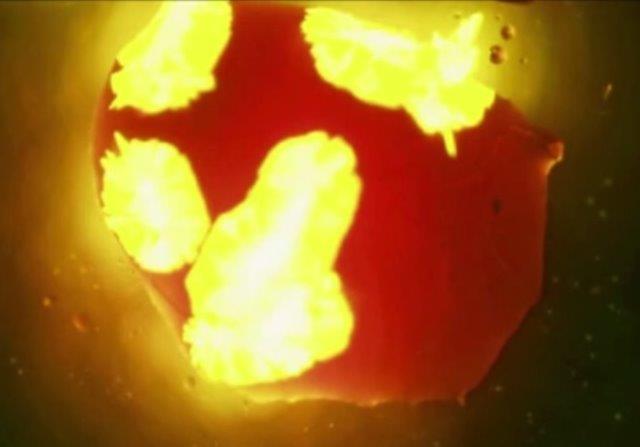FOR IMMEDIATE RELEASE
ACS News Service Weekly PressPac: May 13, 2015
Light it up: Materials crystallize with surprising properties (video)
"Shear-triggered Crystallization and Light Emission of a Thermally Stable Organic Supercooled Liquid"
ACS Central Science
Think about your favorite toys as a child. Did they light up or make funny noises when you touched them? Maybe they changed shape or texture. Today in ACS Central Science, researchers report a new material that combines many of these characteristics. Beyond being fun, these materials, called organic “supercooled” liquids, may be useful for optical storage systems and biomedical sensors.
Some materials, like ordinary table salt, are crystals. When most crystals are heated up and then cooled again, they recrystallize. A few others don’t quite snap back to their original well-ordered crystals when cooled but form amorphous supercooled liquids. For certain applications such as organic electronics and pharmaceutics, thermally stable amorphous organic materials are very important for device reliability and consistent efficacy. To better understand these processes, Jinsang Kim and colleagues investigated how modifications of molecular structure can provide unique thermal stability to molten organic liquid in a wide temperature range.
The researchers studied a chemical called DPP, which has been widely used in dyes and organic electronics applications. They found that when two balanced intermolecular interaction forces implemented in DPP molecules are working toward opposite directions, the DPP remains in a uniquely stable supercooled liquid state. Interestingly, a small “shear force” (getting rubbed) can break the force balance and induce rapid crystallization with a color change and bright “glow” under UV light. They say that their work has provided an understanding about molecular features that could be used to create thermally stable supercooled liquids.
To see the liquid in action, watch it on video.

Video of the material

